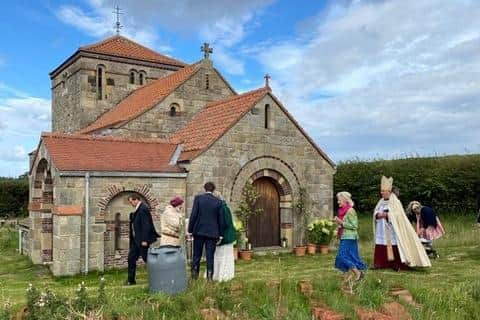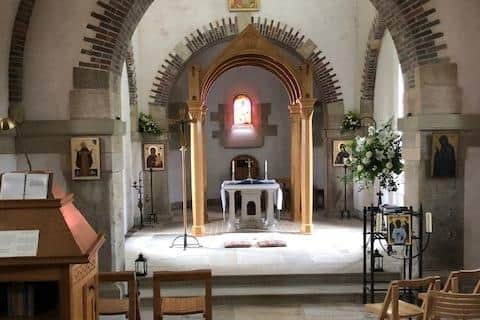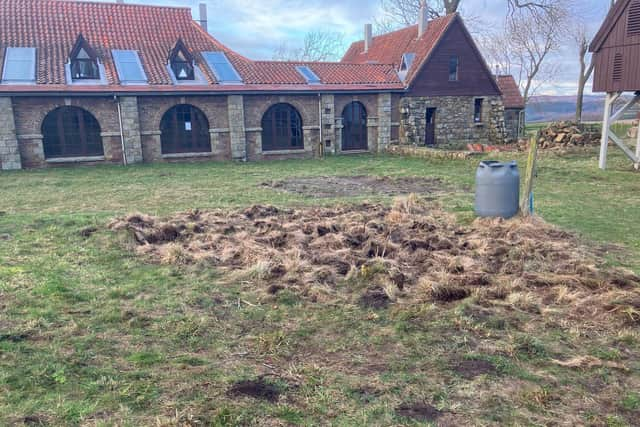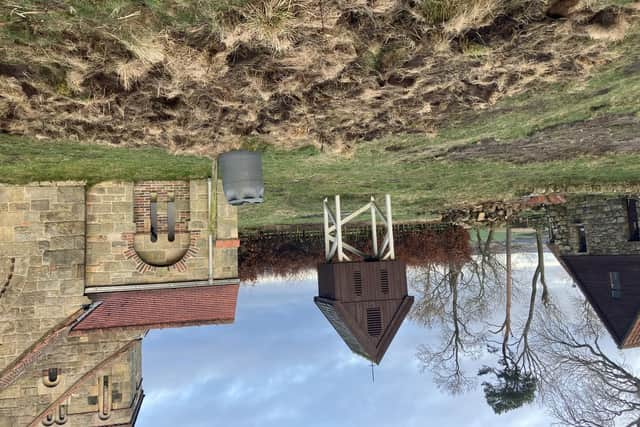Fundraising bid to support new plans for Shepherds Law hermitage in Northumberland
and live on Freeview channel 276
It was one of four very different locations that he was weighing up as a site for a contemplative hermitage.
In the event, Shepherds Law won and Harold began a lifetime’s work to make his vision a reality. It aimed to capture something of the earlier mission of the northern saints - Aidan, Cuthbert and Wilfrid.
Advertisement
Hide AdAdvertisement
Hide AdHis starting point was to rebuild the old farmhouse to include a couple of monastic cells, a parlour for meals, a kitchen and a rustic chapel up in the eaves.


Students training at the seminary at Cuddesdon, outside Oxford, came in the summer months to help Harold build the walls with stone from the ruined buildings and the nearby quarry just below.
Early on, life was fairly austere as recounted by that same young man, who had first driven him to Shepherds Law. Food was simple but nourishing. Prayer began with Lauds at 6.30am followed by Mattins, then the little hours - Terce, Sext and None (the third, sixth and ninth hours), after that, Evensong and finally Compline (Night Prayer) at 8.30pm.
If a priest came to stay then, likely as not, there would be a Eucharist; Brother Edward, the charismatic Guardian of Alnmouth Friary, was a frequent visitor, celebrant and support.
Advertisement
Hide AdAdvertisement
Hide AdFor the first 20 years, lighting meant trimming the wicks of oil lamps!


In the 1980s, Harold moved his vision on. With help from his many supporters across Britain and mainland Europe, he raised money to build four cells.
Michael and Eddy Pringle, local builders based nearby at Broome Park, helped bring the vision into reality.
The four two storey cells are after the fashion of Carthusian monasteries - the historic Mountgrace Priory in North Yorkshire is based on a similar model.
Advertisement
Hide AdAdvertisement
Hide AdIn 1989, Robert Runcie, then Archbishop of Canterbury, was persuaded by Alec Graham, then Bishop of Newcastle, to bless them.


After his mother’s death in the 1990s he used his part of her inheritance to build an outstanding and prize-winning chapel. Built of local stone with brick facings and simple stained glass, if placed atop a hill in Provence it would appear to have been there 1000 years.
The Archbishop of York with the Bishops of Newcastle and Wakefield consecrated the chapel alongside an ecumenical team – one of Harold’s passions is the unity of God’s Church.
Three years ago, Harold became too frail to live alone - he’s now 93.
Advertisement
Hide AdAdvertisement
Hide AdSo, a new trust, including four religious, is committed to continuing Harold’s vision. Hopefully, others will give their life or part of their life to Shepherds Law’s vocation.


They are raising funds to make the heritage fireproof, fully insulated and connected by a cloister-corridor between chapel and cells.
Father George Guiver CR, one of Harold’s oldest friends and a monk from Mirfield is making a sponsored cycle ride from Shepherds Law to Durham to raise some of the considerable funds needed to make the hermitage ready.
To donate visit https// gofundme.com /sponsored-bike-ride-for-shepherds-law-hermitage or cheques to Stephen Clough, 22 Ravensdowne, Berwick, TD25 1HX.
Comment Guidelines
National World encourages reader discussion on our stories. User feedback, insights and back-and-forth exchanges add a rich layer of context to reporting. Please review our Community Guidelines before commenting.